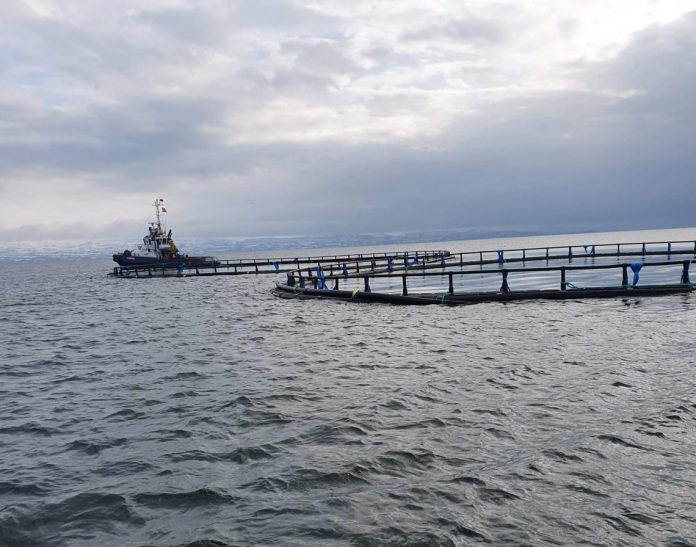When Russia closed its borders because of the coronavirus pandemic, the Norwegian company Helgeland Plast had to rethink how to delivering salmon cages to its neighbours in the east. The solution was for a to team to drive over 1300 kilometres to have the cages put together and then picked up by a Russian tugboat.
“COVID-19 brought with it a great deal of uncertainty about our activities, both on the customer side and the supplier side. All the measures that were implemented, either by the government or the municipalities, changed our surroundings in such a way that we had to create some scenarios of situations that could potentially arise,” said Petter Jørgensen to SalmonBusiness.
“So many questions arose, which we had to handle. There were several issues that needed to be mapped and analysed, so we were able to see what challenges lay ahead with the infection control measures,” he added.

Jørgensen is responsible for aquaculture in Helgeland Plast, which is a wholly owned subsidiary of the RAS equipment supplier, AKVA group.
“All our customers took strong measures around infection protection without reducing operations, which eliminated some of the uncertainty surrounding deliveries of cages,” Jørgensen continued.
It was NRK that first reported the case.
Sent assembly team north
Among these customers is Russia’s largest salmon farmer, Russian Aquaculture, which produces salmon and trout on the Kola Peninsula. According to Jørgensen, they received feedback that the company was interested in collecting the cages in Norway because the installers could not travel to Russia.
Therefore, an installation team travelled by car from Mid-Norway to Northern Norway where they put together the cages for the Russians. The team was quarantined for 14 days upon arrival in Northern Norway. In addition, the team had to submit daily self-declarations for health to the nearest manager. The employees from Helgeland Plast worked in a restricted area, and there were separate procedures in this area to take care of infection control.
“Good thing we get to use our proximity to Russia.”
After the cages were assembled in northern Norway, it took around 24 hours for the tugship to ship them to Russia. For competitive reasons, Jorgensen did not want to comment on how many cages have been transported from Northern Norway to Russia during the coronavirus.
He added that local contractors were also hired, which they were very pleased with.
The Mayor in the region, Wenche Pedersen told NRK that the collaboration was exciting.
“In Finnmark, we have in many people who want to establish business cooperation with Russia, and this is a practical example of that. In Vadsø, we have vacant industrial land, and it is good that we are able to exploit our proximity to Russia,” she told NRK.


